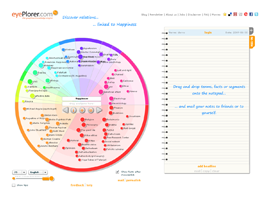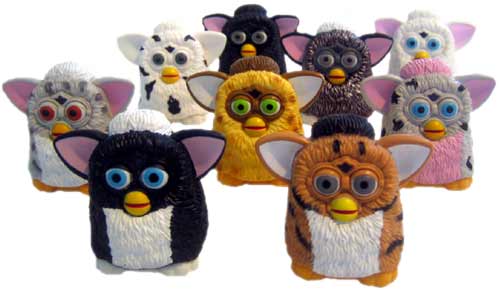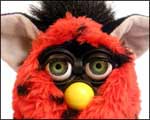Based mainly on the outstanding informations at the website www.Conscious-Robots.com, an updated list of people researching in the field of machine consciousness is shown below :
- Dr. Raúl Arrabales Moreno : Assistant Professor, Computer Science Department, Computer Science and Artificial Intelligence, Universidad Carlos III de Madrid
- Dr. Igor Aleksander : Emeritus Professor of Neural Systems Engineering in the Department of Electrical and Electronic Engineering at Imperial College London, UK; Fellow of the Royal Academy of Engineering
- Dr Will Browne : Senior Lecturer, School of Engineering and Computer Science, Victoria University of Wellington, New Zealand
- Dr. Antonio Chella : Head of RoboticsLab, Dipartimento di Ingegneria Informatica (DINFO), Università di Palermo, Italy
- Dr. Ron Chrisley : Reader in Philosophy, Director, Center for Research in Cognitive Science, University of Sussex, UK
- Dr. Axel Cleeremans : Research Director, National Fund for Scientific Research, Member of the Royal Academy of Belgium, Consciousness, Cognition & Computation Group, Université Libre de Bruxelles CP 191, Belgium
- Dr. Stan Franklin : W. Harry Feinstone Interdisciplinary Research Professor, Cognitive Computing Research Group
Department of Computer Science, Institute for Intelligent Systems, The University of Memphis, USA - Dr. David Gamez : Research Associate, Department of Computing, Imperial College, London, UK
- Dr. Ben Goertzel : Cross-disciplinary scientist, engineer, entrepreneur, manager, writer, speaker; CTO, Genescient Corp, Irvine CA, USA; CEO and Chief Scientist, Novamente LLC, Rockville MD, USA; CEO and Chief Scientist, Biomind LLC, Rockville MD, USA
- Steve Grand : Director, Cyberlife Research Ltd., Somerset, UK
- Dr. Pentti O A Haikonen : Adjunct Professor, Department of Philosophy, University of Illinois at Springfield, USA
- Owen Holland : Professor of cognitive robotics (Informatics) in the Sackler Centre for Consciousness Science at the University of Sussex, UK
- Dr. Ray Kurzweil : entreprenuer, leading inventor, author, restless genius, ultimate thinking machine; he has received nineteen honorary Doctorates and honors from three U.S. presidents; in 2002 he was inducted into the National Inventor’s Hall of Fame in USA
- Dr. Riccardo Manzotti : Assistant Professor in Psychology, IULM University, Milan, Italy
- Dr. Hugo Gravato Marques : Artificial Intelligence Laboratory, Department of Informatics, University of Zurich, Switzerland
- Dr. Michael Loren Mauldin (alias Fuzzy) : Founder and chief scientist of Lycos ; Director of Conversive, Inc.
- Peter Plantec : Clinical psychologist, animator, virtual human designer ; author of the book Virtual Humans; founder of Virtual Personalities, Inc. (now Conversive, Inc.) in order to create the first virtual human interface Vperson (now Verbots)
- Dr. Uma Ramamurthy : Asst. Professor & Director of Research Informatics, Dan L. Duncan Institute for Clinical and Translational Research, Baylor College of Medicine, Houston, USA
- Dr. Ricardo Sanz : Professor in Systems Engineering and Automatic Control and coordinator of the Autonomous Systems Laboratory research group at the Universidad Politécnica de Madrid in Madrid, Spain
- Dr. Anil Seth : Co-Director, Sackler Centre for Consciousness Science (SCCS), University of Sussex; Reader, School of Informatics, University of Sussex; EPSRC Leadership Fellow; Visiting Professor, Dept of Psychology, University of Amsterdam
- Dr. Murray Patrick Shanahan : Professor of Cognitive Robotics, Department of Computing, Computational Neurodynamics Group, Imperial College London, UK
- Dr. Aaron Sloman : School of Computer Science, The University of Birmingham, UK




